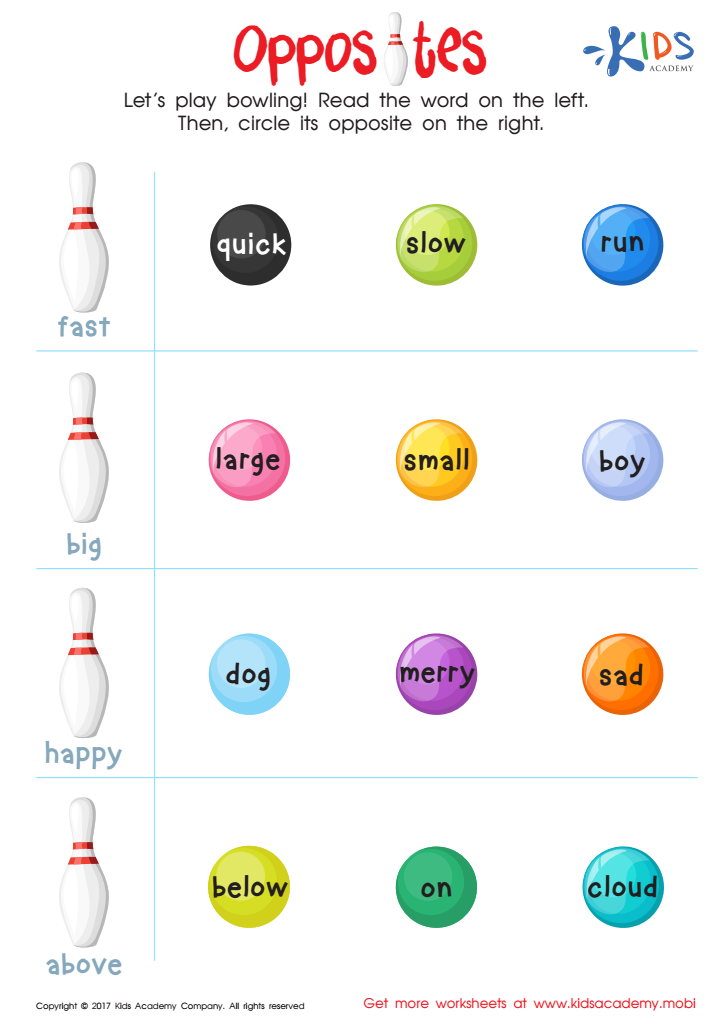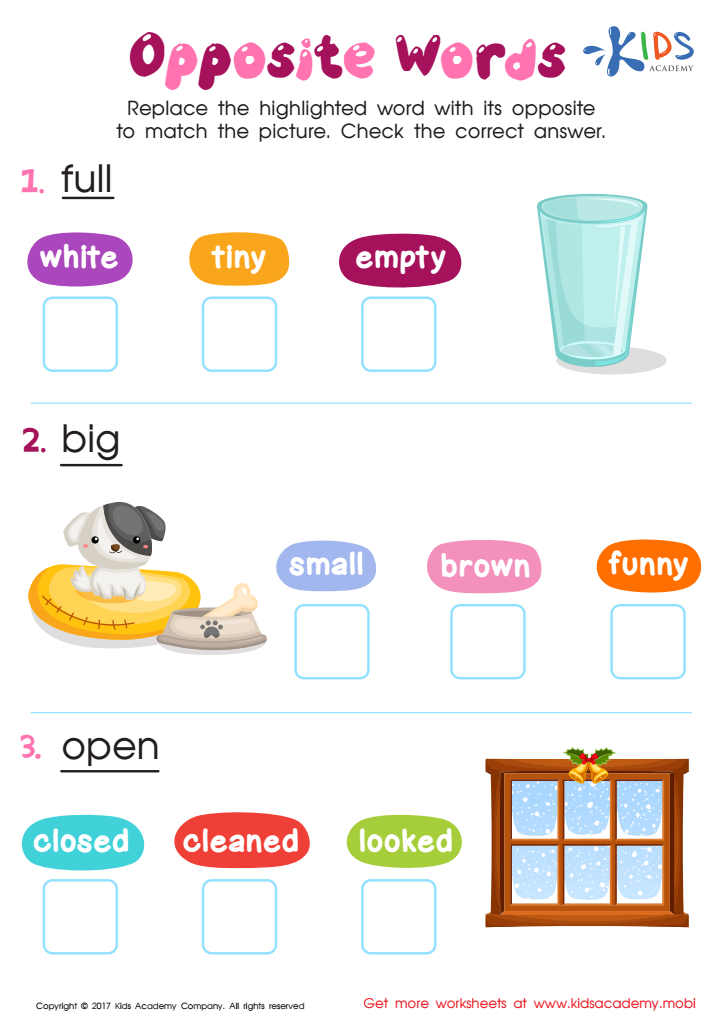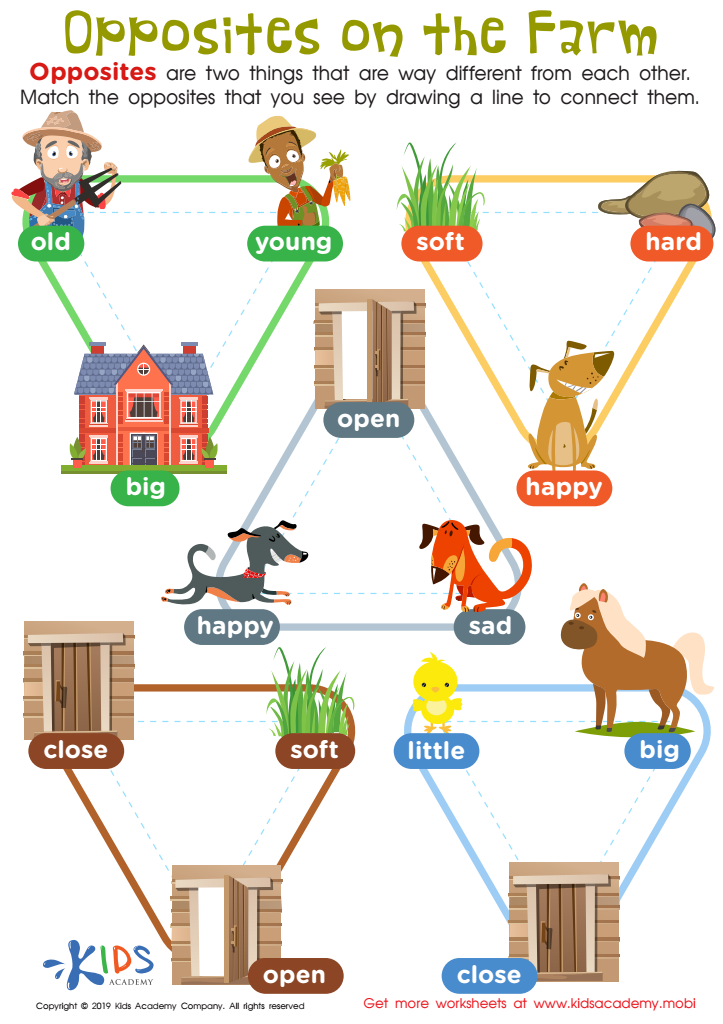Demonstrate Understanding of Frequently Occurring Verbs and Adjectives by Relating Them to Their Opposites - Lesson for Kindergarten, Chapter - Word Relationships and Nuances
In this engaging lesson designed for Kindergarten students, young learners will embark on an exciting exploration of word relationships and nuances within the realm of vocabulary. By focusing on frequently occurring verbs and adjectives, students will learn to identify and relate these words to their opposites, a foundational skill that enhances their understanding of language and its complexities.
Through a series of interactive activities, including the Opposites Worksheet, Opposite Words Worksheet, and Opposites on the Farm Worksheet, students will be guided to discover how words can be connected through their meanings, even when they express contrasting ideas. This lesson will not only help students in expanding their vocabulary but also in developing critical thinking skills as they learn to analyze word relationships.
Understanding opposites is crucial for young learners as it aids in building a robust vocabulary, improves reading comprehension, and fosters better communication skills. By mastering the concept of opposites, students will be better equipped to express themselves clearly and understand the nuances of language, setting a strong foundation for their future learning journey in the realm of English language arts.
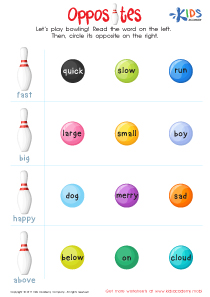
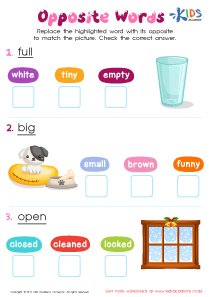

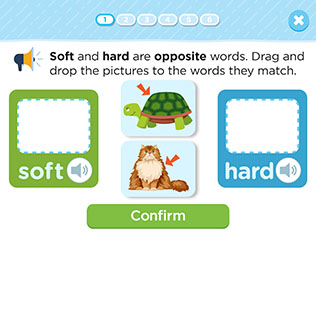
-
Activity 1 / Opposites Worksheet
If your students are fans of bowling, this exercise is sure to be an enjoyable one. In this worksheet, your young ones are expected to correctly identify and circle the correct opposites of the words on the left. Read the words on the left with your children, and ask them if they know what the opposites are. Then, look through the options on the right and see if their answer is among them. Circle the correct answers.
-
Activity 2 / Opposite Words Worksheet
If your child understands the meaning of some easy words, they should take it a step further by learning words and opposites, too. Look through the worksheet with your little one. Ask them if they can read the underlined words. Then, look at the words in the highlighted colors. Ask your child which of the words is the correct opposite of the underlined word. Remember that the correct answer should match with the picture.
-
Activity 3 / Opposites on the Farm Worksheet
Teaching children the concept of opposites is important because it allows them to develop an ability to compare and contrast. This is an important skill in lots of things—reading, math, writing and more. This fun and free worksheet lets them compare things you find on the farm, and they'll be able to use the traceable lines to match the pairs of opposites correctly. They'll be able to use familiar imagery to match the opposites as well.
-
Activity 4 / Relating Frequently Occurring Verbs and Adjectives to their Opposites - Quiz
In this assessment, students will match words and pictures to their opposites.

